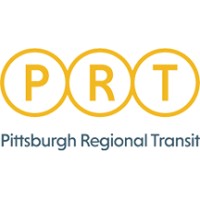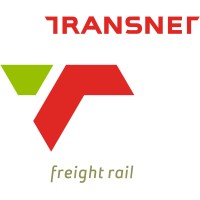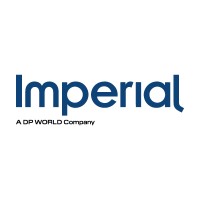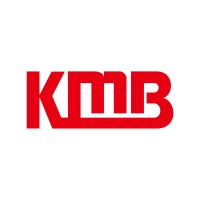
Pittsburgh Regional Transit Company Cyber Security Posture
rideprt.orgPittsburgh Regional Transit, formerly Port Authority of Allegheny County, is the nation’s 26th largest transit agency. Our 2,600 employees operate, maintain, and support bus, rail, and incline service in the Pittsburgh metro area.
PRT Company Details
pittsburgh-regional-transit
842 employees
7068.0
484
Truck Transportation
rideprt.org
Scan still pending
PIT_1148579
In-progress
Between 900 and 1000
This score is AI-generated and less favored by cyber insurers, who prefer the TPRM score.
 PRT Global Score
PRT Global Score.png)

Pittsburgh Regional Transit Company Scoring based on AI Models
| Model Name | Date | Description | Current Score Difference | Score |
|---|---|---|---|---|
| AVERAGE-Industry | 03-12-2025 | This score represents the average cybersecurity rating of companies already scanned within the same industry. It provides a benchmark to compare an individual company's security posture against its industry peers. | N/A | Between 900 and 1000 |
Pittsburgh Regional Transit Company Cyber Security News & History
| Entity | Type | Severity | Impact | Seen | Url ID | Details | View |
|---|---|---|---|---|---|---|---|
| Pittsburgh Regional Transit | Ransomware | 100 | 12/2024 | PIT000122724 | Link | ||
Rankiteo Explanation : Attack which create outageDescription: Pittsburgh Regional Transit (PRT) suffered service disruptions due to a ransomware attack, causing significant inconvenience for local transportation systems. The incident, detected on December 19, 2024, led to temporary interruptions in rail services, impacting commuters. Cybersecurity experts and law enforcement were engaged to address the situation and assess potential data compromises. Although rail services resumed promptly, the Customer Service Center's ability to process ConnectCards remains affected. The extent of data theft, if any, remains undisclosed. | |||||||
| Pittsburgh Regional Transit (PRT) | Ransomware | 100 | 5 | 12/2024 | PIT000122824 | Link | |
Rankiteo Explanation : Attack threatening the organization’s existenceDescription: On December 23, 2024, Pittsburgh Regional Transit experienced a ransomware attack that caused considerable disruptions to its transportation services. The incident was promptly addressed with an investigation, law enforcement notification, and the expertise of cybersecurity professionals. Although there was a temporary suspension of rail services on Thursday morning, operations have since returned to normal. Nonetheless, certain rider services like the PRT Customer Service Center remained affected with an inability to manage Senior and Kid's ConnectCards. The extent of data compromise, if any, remains undetermined, and the identity of the cyber attackers or ransomware gang responsible for the incident has not been disclosed. | |||||||
Pittsburgh Regional Transit Company Subsidiaries

Pittsburgh Regional Transit, formerly Port Authority of Allegheny County, is the nation’s 26th largest transit agency. Our 2,600 employees operate, maintain, and support bus, rail, and incline service in the Pittsburgh metro area.
Access Data Using Our API

Get company history
.png)
PRT Cyber Security News
Pittsburgh transit authority hit with ransomware attack
Pittsburgh's transit authority was hit with a ransomware attack last week, causing temporary disruptions to the city's public transportation ...
Pittsburgh Regional Transit investigating cybersecurity incident
Pittsburgh Regional Transit is investigating a ransomware attack that the company detected on Thursday, Dec. 19.
Information affected: PRT provides update after cybersecurity incident
Pittsburgh Regional Transit provided an update Tuesday after a cybersecurity incident occurred back in Dec. 2024.
Pittsburgh Regional Transit attributes recent service disruptions to ransomware attack
A recent ransomware attack is causing significant disruptions to public transportation in the Pittsburgh area. Pittsburgh Regional Transit ...
Pittsburgh Regional Transit dealing with ransomware attack that slowed light rail system last week
What Pittsburgh Regional Transit last week thought was a computer glitch that affected rail service has turned out to be a ransomware attack ...
A ransomware attack disrupted services at Pittsburgh Regional Transit
The ransomware attack caused significant service disruptions to local transportation in Pittsburgh. The agency has notified law enforcement and is investigating ...
Cybersecurity incident now blamed for PRT internet outage that caused delays, affected ConnectCards
An internet outage early Thursday at Pittsburgh Regional Transit delayed rail cars and shut down the computers at customer service.
Pittsburgh Regional Transit discloses ransomware attack
Pittsburgh Regional Transit is investigating a ransomware attack that targeted the transit agency's communications operations last week and ...
Police investigating attempted robbery on Pittsburgh Regional Transit bus
Per a PRT spokesperson, initial reports indicate a “few juveniles” tried to rob an elderly man while they were all riding on a bus around 9 p.m. ...

PRT Similar Companies

J.B. Hunt Transport Services, Inc.
J.B. Hunt Transport, Inc. is a Fortune 300 company that specializes in freight shipping for customers of all sizes. Our mission is to drive long-term value for our people, customers and shareholders while staying focused on our vision to create the most efficient transportation network in North Amer

DSV - Global Transport and Logistics
At DSV, we keep supply chains flowing in a world of change. We provide and manage supply chain solutions for thousands of companies every day – from small family-run businesses to large global corporations. Our reach is global, yet our presence is local and close to our customers. Approx. 75,000 e

Transnet Freight Rail
Transnet Freight Rail is the largest division of Transnet SOC Ltd. It is a world class heavy haul freight rail company that specialises in the transportation of freight. The company maintains an extensive rail network across South Africa that connects with other rail networks in the sub-Saharan reg

Penske Truck Leasing
Penske Truck Leasing is a Penske Transportation Solutions company headquartered in Reading, Pennsylvania. A leading provider of innovative transportation solutions, Penske operates and maintains more than 437,000 vehicles and serves its customers from nearly 1,000 maintenance facilities and more tha

Imperial
Imperial is an African focused provider of integrated market access and logistics solutions. With a focus on the following key industries - healthcare, consumer, automotive, chemicals, industrial and commodities - we take our clients’ and principals’ products to some of the fastest growing and most

The Kowloon Motor Bus Company (1933) Limited
Established in 1933, The Kowloon Motor Bus Company (1933) Limited ("KMB") is the largest franchised bus operator in Hong Kong, serving more than 2.8 million passenger-trips each day. A workforce of more than 12,300 employees, including some 10,000 bus captains, ensures that customers enjoy high-qual

Frequently Asked Questions (FAQ) on Cybersecurity Incidents
PRT CyberSecurity History Information
Total Incidents: According to Rankiteo, PRT has faced 2 incidents in the past.
Incident Types: The types of cybersecurity incidents that have occurred include ['Ransomware'].
Total Financial Loss: The total financial loss from these incidents is estimated to be {total_financial_loss}.
Cybersecurity Posture: The company's overall cybersecurity posture is described as Pittsburgh Regional Transit, formerly Port Authority of Allegheny County, is the nation’s 26th largest transit agency. Our 2,600 employees operate, maintain, and support bus, rail, and incline service in the Pittsburgh metro area..
Detection and Response: The company detects and responds to cybersecurity incidents through {description_of_detection_and_response_process}.
Incident Details
Incident 1: Ransomware Attack
Title: {Incident_Title}
Description: {Brief_description_of_the_incident}
Date Detected: {Detection_Date}
Date Publicly Disclosed: {Disclosure_Date}
Date Resolved: {Resolution_Date}
Type: {Type_of_Attack}
Attack Vector: {Attack_Vector}
Vulnerability Exploited: {Vulnerability}
Threat Actor: {Threat_Actor}
Motivation: {Motivation}
Incident 2: Data Breach
Title: {Incident_Title}
Description: {Brief_description_of_the_incident}
Date Detected: {Detection_Date}
Date Publicly Disclosed: {Disclosure_Date}
Date Resolved: {Resolution_Date}
Type: {Type_of_Attack}
Attack Vector: {Attack_Vector}
Vulnerability Exploited: {Vulnerability}
Threat Actor: {Threat_Actor}
Motivation: {Motivation}
Common Attack Types: The most common types of attacks the company has faced are ['Ransomware'].
Identification of Attack Vectors: The company identifies the attack vectors used in incidents through {description_of_identification_process}.
Impact of the Incidents
Incident 1: Ransomware Attack
Financial Loss: {Financial_Loss}
Data Compromised: {Data_Compromised}
Systems Affected: {Systems_Affected}
Downtime: {Downtime}
Operational Impact: {Operational_Impact}
Conversion Rate Impact: {Conversion_Rate_Impact}
Revenue Loss: {Revenue_Loss}
Customer Complaints: {Customer_Complaints}
Brand Reputation Impact: {Brand_Reputation_Impact}
Legal Liabilities: {Legal_Liabilities}
Identity Theft Risk: {Identity_Theft_Risk}
Payment Information Risk: {Payment_Information_Risk}
Incident 2: Data Breach
Financial Loss: {Financial_Loss}
Data Compromised: {Data_Compromised}
Systems Affected: {Systems_Affected}
Downtime: {Downtime}
Operational Impact: {Operational_Impact}
Conversion Rate Impact: {Conversion_Rate_Impact}
Revenue Loss: {Revenue_Loss}
Customer Complaints: {Customer_Complaints}
Brand Reputation Impact: {Brand_Reputation_Impact}
Legal Liabilities: {Legal_Liabilities}
Identity Theft Risk: {Identity_Theft_Risk}
Payment Information Risk: {Payment_Information_Risk}
Average Financial Loss: The average financial loss per incident is {average_financial_loss}.
Commonly Compromised Data Types: The types of data most commonly compromised in incidents are {list_of_commonly_compromised_data_types}.
Incident 1: Ransomware Attack
Entity Name: {Entity_Name}
Entity Type: {Entity_Type}
Industry: {Industry}
Location: {Location}
Size: {Size}
Customers Affected: {Customers_Affected}
Incident 2: Data Breach
Entity Name: {Entity_Name}
Entity Type: {Entity_Type}
Industry: {Industry}
Location: {Location}
Size: {Size}
Customers Affected: {Customers_Affected}
Response to the Incidents
Incident 1: Ransomware Attack
Incident Response Plan Activated: {Yes/No}
Third Party Assistance: {Yes/No}
Law Enforcement Notified: {Yes/No}
Containment Measures: {Containment_Measures}
Remediation Measures: {Remediation_Measures}
Recovery Measures: {Recovery_Measures}
Communication Strategy: {Communication_Strategy}
Adaptive Behavioral WAF: {Adaptive_Behavioral_WAF}
On-Demand Scrubbing Services: {On_Demand_Scrubbing_Services}
Network Segmentation: {Network_Segmentation}
Enhanced Monitoring: {Enhanced_Monitoring}
Incident 2: Data Breach
Incident Response Plan Activated: {Yes/No}
Third Party Assistance: {Yes/No}
Law Enforcement Notified: {Yes/No}
Containment Measures: {Containment_Measures}
Remediation Measures: {Remediation_Measures}
Recovery Measures: {Recovery_Measures}
Communication Strategy: {Communication_Strategy}
Adaptive Behavioral WAF: {Adaptive_Behavioral_WAF}
On-Demand Scrubbing Services: {On_Demand_Scrubbing_Services}
Network Segmentation: {Network_Segmentation}
Enhanced Monitoring: {Enhanced_Monitoring}
Incident Response Plan: The company's incident response plan is described as {description_of_incident_response_plan}.
Third-Party Assistance: The company involves third-party assistance in incident response through {description_of_third_party_involvement}.
Data Breach Information
Incident 2: Data Breach
Type of Data Compromised: {Type_of_Data}
Number of Records Exposed: {Number_of_Records}
Sensitivity of Data: {Sensitivity_of_Data}
Data Exfiltration: {Yes/No}
Data Encryption: {Yes/No}
File Types Exposed: {File_Types}
Personally Identifiable Information: {Yes/No}
Prevention of Data Exfiltration: The company takes the following measures to prevent data exfiltration: {description_of_prevention_measures}.
Handling of PII Incidents: The company handles incidents involving personally identifiable information (PII) through {description_of_handling_process}.
Ransomware Information
Incident 1: Ransomware Attack
Ransom Demanded: {Ransom_Amount}
Ransom Paid: {Ransom_Paid}
Ransomware Strain: {Ransomware_Strain}
Data Encryption: {Yes/No}
Data Exfiltration: {Yes/No}
Ransom Payment Policy: The company's policy on paying ransoms in ransomware incidents is described as {description_of_ransom_payment_policy}.
Data Recovery from Ransomware: The company recovers data encrypted by ransomware through {description_of_data_recovery_process}.
Regulatory Compliance
Incident 1: Ransomware Attack
Regulations Violated: {Regulations_Violated}
Fines Imposed: {Fines_Imposed}
Legal Actions: {Legal_Actions}
Regulatory Notifications: {Regulatory_Notifications}
Incident 2: Data Breach
Regulations Violated: {Regulations_Violated}
Fines Imposed: {Fines_Imposed}
Legal Actions: {Legal_Actions}
Regulatory Notifications: {Regulatory_Notifications}
Regulatory Frameworks: The company complies with the following regulatory frameworks regarding cybersecurity: {list_of_regulatory_frameworks}.
Ensuring Regulatory Compliance: The company ensures compliance with regulatory requirements through {description_of_compliance_measures}.
Lessons Learned and Recommendations
Incident 1: Ransomware Attack
Lessons Learned: {Lessons_Learned}
Incident 2: Data Breach
Lessons Learned: {Lessons_Learned}
Incident 1: Ransomware Attack
Recommendations: {Recommendations}
Incident 2: Data Breach
Recommendations: {Recommendations}
Key Lessons Learned: The key lessons learned from past incidents are {list_of_key_lessons_learned}.
Implemented Recommendations: The company has implemented the following recommendations to improve cybersecurity: {list_of_implemented_recommendations}.
References
Additional Resources: Stakeholders can find additional resources on cybersecurity best practices at {list_of_additional_resources}.
Investigation Status
Incident 1: Ransomware Attack
Investigation Status: {Investigation_Status}
Incident 2: Data Breach
Investigation Status: {Investigation_Status}
Communication of Investigation Status: The company communicates the status of incident investigations to stakeholders through {description_of_communication_process}.
Stakeholder and Customer Advisories
Incident 1: Ransomware Attack
Stakeholder Advisories: {Stakeholder_Advisories}
Customer Advisories: {Customer_Advisories}
Incident 2: Data Breach
Stakeholder Advisories: {Stakeholder_Advisories}
Customer Advisories: {Customer_Advisories}
Advisories Provided: The company provides the following advisories to stakeholders and customers following an incident: {description_of_advisories_provided}.
Initial Access Broker
Incident 1: Ransomware Attack
Entry Point: {Entry_Point}
Reconnaissance Period: {Reconnaissance_Period}
Backdoors Established: {Backdoors_Established}
High Value Targets: {High_Value_Targets}
Data Sold on Dark Web: {Yes/No}
Incident 2: Data Breach
Entry Point: {Entry_Point}
Reconnaissance Period: {Reconnaissance_Period}
Backdoors Established: {Backdoors_Established}
High Value Targets: {High_Value_Targets}
Data Sold on Dark Web: {Yes/No}
Monitoring and Mitigation of Initial Access Brokers: The company monitors and mitigates the activities of initial access brokers through {description_of_monitoring_and_mitigation_measures}.
Post-Incident Analysis
Incident 1: Ransomware Attack
Root Causes: {Root_Causes}
Corrective Actions: {Corrective_Actions}
Incident 2: Data Breach
Root Causes: {Root_Causes}
Corrective Actions: {Corrective_Actions}
Post-Incident Analysis Process: The company's process for conducting post-incident analysis is described as {description_of_post_incident_analysis_process}.
Corrective Actions Taken: The company has taken the following corrective actions based on post-incident analysis: {list_of_corrective_actions_taken}.
Additional Questions
General Information
Ransom Payment History: The company has {paid/not_paid} ransoms in the past.
Last Ransom Demanded: The amount of the last ransom demanded was {last_ransom_amount}.
Last Attacking Group: The attacking group in the last incident was {last_attacking_group}.
Incident Details
Most Recent Incident Detected: The most recent incident detected was on {most_recent_incident_detected_date}.
Most Recent Incident Publicly Disclosed: The most recent incident publicly disclosed was on {most_recent_incident_publicly_disclosed_date}.
Most Recent Incident Resolved: The most recent incident resolved was on {most_recent_incident_resolved_date}.
Impact of the Incidents
Highest Financial Loss: The highest financial loss from an incident was {highest_financial_loss}.
Most Significant Data Compromised: The most significant data compromised in an incident was {most_significant_data_compromised}.
Most Significant System Affected: The most significant system affected in an incident was {most_significant_system_affected}.
Response to the Incidents
Third-Party Assistance in Most Recent Incident: The third-party assistance involved in the most recent incident was {third_party_assistance_in_most_recent_incident}.
Containment Measures in Most Recent Incident: The containment measures taken in the most recent incident were {containment_measures_in_most_recent_incident}.
Data Breach Information
Most Sensitive Data Compromised: The most sensitive data compromised in a breach was {most_sensitive_data_compromised}.
Number of Records Exposed: The number of records exposed in the most significant breach was {number_of_records_exposed}.
Ransomware Information
Highest Ransom Demanded: The highest ransom demanded in a ransomware incident was {highest_ransom_demanded}.
Highest Ransom Paid: The highest ransom paid in a ransomware incident was {highest_ransom_paid}.
Regulatory Compliance
Highest Fine Imposed: The highest fine imposed for a regulatory violation was {highest_fine_imposed}.
Most Significant Legal Action: The most significant legal action taken for a regulatory violation was {most_significant_legal_action}.
Lessons Learned and Recommendations
Most Significant Lesson Learned: The most significant lesson learned from past incidents was {most_significant_lesson_learned}.
Most Significant Recommendation Implemented: The most significant recommendation implemented to improve cybersecurity was {most_significant_recommendation_implemented}.
References
Most Recent Source: The most recent source of information about an incident is {most_recent_source}.
Most Recent URL for Additional Resources: The most recent URL for additional resources on cybersecurity best practices is {most_recent_url}.
Investigation Status
Current Status of Most Recent Investigation: The current status of the most recent investigation is {current_status_of_most_recent_investigation}.
Stakeholder and Customer Advisories
Most Recent Stakeholder Advisory: The most recent stakeholder advisory issued was {most_recent_stakeholder_advisory}.
Most Recent Customer Advisory: The most recent customer advisory issued was {most_recent_customer_advisory}.
Initial Access Broker
Most Recent Entry Point: The most recent entry point used by an initial access broker was {most_recent_entry_point}.
Most Recent Reconnaissance Period: The most recent reconnaissance period for an incident was {most_recent_reconnaissance_period}.
Post-Incident Analysis
Most Significant Root Cause: The most significant root cause identified in post-incident analysis was {most_significant_root_cause}.
Most Significant Corrective Action: The most significant corrective action taken based on post-incident analysis was {most_significant_corrective_action}.
What Do We Measure?
















Every week, Rankiteo analyzes billions of signals to give organizations a sharper, faster view of emerging risks. With deeper, more actionable intelligence at their fingertips, security teams can outpace threat actors, respond instantly to Zero-Day attacks, and dramatically shrink their risk exposure window.
These are some of the factors we use to calculate the overall score:
Identify exposed access points, detect misconfigured SSL certificates, and uncover vulnerabilities across the network infrastructure.
Gain visibility into the software components used within an organization to detect vulnerabilities, manage risk, and ensure supply chain security.
Monitor and manage all IT assets and their configurations to ensure accurate, real-time visibility across the company's technology environment.
Leverage real-time insights on active threats, malware campaigns, and emerging vulnerabilities to proactively defend against evolving cyberattacks.




